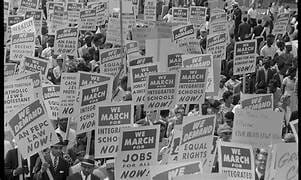Civil Rights and Discrimination II: Affirmative Action
June 26, 2024 2024-06-26 16:31
Civil Rights and Discrimination II: Affirmative Action
Affirmative action is a policy initiative designed to address historical and ongoing inequalities faced by marginalized groups, particularly in the realms of education and employment. Rooted in the civil rights movement of the mid-20th century, affirmative action aims to create opportunities for those who have been systematically excluded or disadvantaged.
Historical Context
The concept of affirmative action emerged during the civil rights era, a time marked by widespread activism against racial segregation and discrimination in the United States. The Civil Rights Act of 1964 was a landmark piece of legislation that prohibited discrimination on the basis of race, color, religion, sex, or national origin. In 1965, President Lyndon B. Johnson issued Executive Order 11246, which required government contractors to take affirmative action to ensure equal employment opportunities for all, regardless of race.
Objectives of Affirmative Action
Affirmative action seeks to:
- Address Past Injustices: By providing opportunities to historically marginalized groups, affirmative action aims to rectify the disadvantages these groups have faced due to systemic discrimination.
- Promote Diversity: In educational institutions and workplaces, affirmative action fosters a diverse environment where multiple perspectives can contribute to innovation, creativity, and understanding.
- Level the Playing Field: By considering the social and economic contexts of applicants, affirmative action helps to ensure that all individuals have a fair chance at success.
Implementation in Education
Affirmative action in education often involves admission policies that consider race, ethnicity, and sometimes socioeconomic status as factors in the admissions process. This approach aims to create a student body that reflects the diversity of the broader society. Supporters argue that diverse educational environments enhance learning by exposing students to a variety of perspectives and experiences.
Landmark Cases
Several significant court cases have shaped the implementation of affirmative action in education:
- Regents of the University of California v. Bakke (1978): The Supreme Court ruled that race could be one of several factors in college admissions but rejected the use of racial quotas.
- Grutter v. Bollinger (2003): The Court upheld the University of Michigan Law School’s affirmative action policy, affirming that student body diversity is a compelling interest that can justify the use of race in admissions.
- Fisher v. University of Texas (2016): The Court upheld the university’s admissions policy, stating that it met the strict scrutiny standard and was necessary to achieve the educational benefits of diversity.
Implementation in Employment
In the workplace, affirmative action policies may include targeted recruitment efforts, training programs, and career development initiatives aimed at increasing the representation of underrepresented groups. Employers may also set goals and timetables for hiring and promoting individuals from these groups, although quotas are generally prohibited.
Legal Framework
Affirmative action in employment is governed by various laws and regulations, including:
- Executive Order 11246: Requires federal contractors to implement affirmative action plans to promote equal employment opportunities.
- Title VII of the Civil Rights Act of 1964: Prohibits employment discrimination and allows for affirmative action as a remedy for proven discrimination.
- The Equal Employment Opportunity Commission (EEOC): Enforces federal laws prohibiting employment discrimination and oversees the implementation of affirmative action programs.
Controversies and Debates
Affirmative action has been a subject of intense debate. Supporters argue that it is necessary to address systemic inequalities and to create diverse, inclusive environments. They contend that without such measures, discrimination and exclusion would persist, perpetuating cycles of disadvantage.
Opponents, however, argue that affirmative action can lead to reverse discrimination, unfairly disadvantaging individuals from non-marginalized groups. They also question the effectiveness of such policies in achieving true equality, suggesting that merit-based systems without consideration of race or ethnicity would be more fair.
Future of Affirmative Action
The future of affirmative action remains uncertain, with ongoing legal challenges and shifting public opinion. As society continues to grapple with issues of race, equality, and justice, the policies and practices of affirmative action will likely evolve. Ensuring that these policies achieve their intended goals without unintended negative consequences will be a key challenge for policymakers, educators, and employers alike.
Conclusion
Affirmative action is a complex and multifaceted policy aimed at addressing historical and ongoing discrimination. By promoting diversity and equal opportunity, it seeks to create a more just and inclusive society. As debates continue and legal landscapes shift, the implementation and impact of affirmative action will remain critical topics in the ongoing struggle for civil rights and equality.
Related Posts
Civil Rights and Discrimination II: Affirmative Action
June 26, 2024 2024-06-26 16:31Popular Tags





























